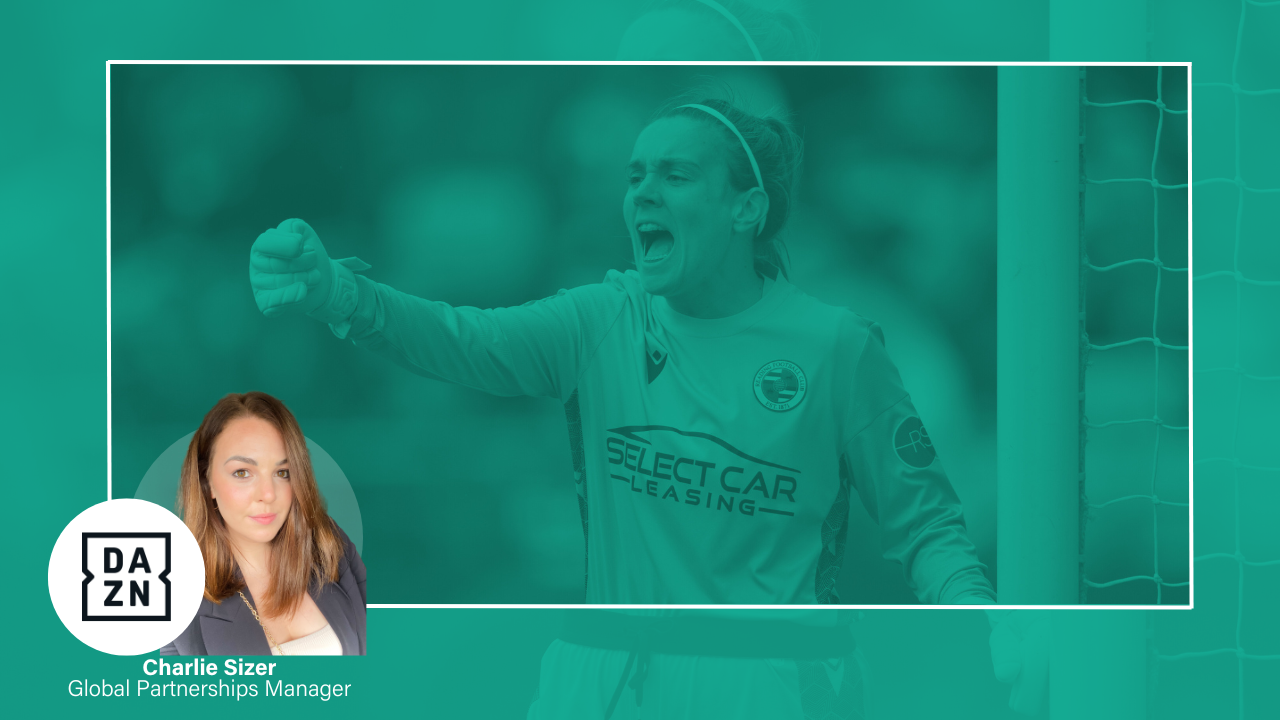I have watched the women’s game evolve in the most incredible ways over the last decade as both a player and a fan. I feel incredibly proud and grateful to be part of a community that is so progressive and proving its value to the rest of the world.
England’s victorious Lionesses propelling the continued success of the Women’s Super League (WSL) has been the pinnacle of success for women’s soccer in the UK. The incredible stories about overcoming adversity and being triumphant against all odds have captured and captivated sports fans across the country.
Success is everywhere. It was announced recently that Arsenal women averaged attendances of over 15,000 last season, which marks the first time a WSL team has achieved a higher average attendance than a Premier League club in the same campaign – AFC Bournemouth averaged 10,309 supporters.
Following the conclusion of the 2022/23 Uefa Women’s Champions League season, DAZN and Crux Sports published a Value & Impact report showing that coverage on the sports streaming service had increased fan interest. Some 80 per cent of respondents stated that DAZN’s coverage stirred their interest, while 57 per cent also believe it played a role in their increased desire to follow women’s soccer more in the future.
The growth at the top of the game is undeniable. Deloitte Sport Business Group’s 2023 Annual Review of Football Finance highlights that the aggregate revenue for a WSL club rose by 60 per cent during a record-breaking 2021/22 season. The combined revenues of the WSL clubs totals UK£32 million (US$41 million), up from UK£20 million (US$25.7 million) in the previous season, primarily driven by new commercial and broadcast deals.
This is all fantastic, but what about the lower levels of the women’s football pyramid?
The hybrid approach of the WSL’s current domestic rights deal with pay-TV broadcaster Sky and public service broadcaster the BBC has delivered both visibility and commercial viability for the league. But it stops there, in the top division. Whilst broadcast revenues are split 75/25 between the WSL and Championship, any club that does not participate in the WSL does not benefit hugely from broadcast rights value or associated sponsorship investment due to the lack of matches currently broadcasted.
We cannot forget about the lower divisions. The longevity and sustainability of the women’s soccer pyramid is absolutely in question and we must continue to bring this to the table. In fact, that was a key focus of the recommendations in Karen Carney’s recently published independent review of women’s football.
As the WSL starts to flourish, there is an evident gap that is starting to grow from the top flight to the second-tier Championship down. The sad truth is that there needs to be more support for the clubs and players in these leagues to grow women’s soccer holistically.
The aim of this article is to share a variety of perspectives and examples that highlight the disparity of the women’s soccer pyramid and the challenges that different clubs are facing to ensure we continue to discuss supporting the growth of the game outside of the WSL.
A Reading reality check
Reading have released 13 senior women’s players after their contracts expired following the team’s relegation from the WSL. This came as part of a wider restructure as the club announced that it can no longer sustain the financial investment in its women’s side. I doubt this is a decision that Reading took lightly, especially given the club’s wider financial challenges around unpaid tax bills. According to the club, owner Dai Yongge has invested approximately UK£6 million into the women’s team since 2018.
It is unfortunately a good example of the sad financial truth for professional women’s teams outside of the WSL, who continue to be deprioritised when clubs fall on hard times. Despite having access to Premier League riches not that long ago, Reading have changed player and staff contracts to part-time for their women’s team, resulting in many players leaving.
After so much progress has been made in women’s soccer, this feels like a huge step backwards, and highlights the financial gap between the WSL and the lower leagues. The club has said that it is now focused on establishing a more sustainable revenue model for its women’s team and continues to be committed to a strong player pathway for young girls in its community.
To think, however, that a women’s team which was performing at the elite level in its domestic league is no longer able to provide players with full-time contracts in the Championship is a huge disappointment.
Being integrated into main clubs provides immediate short-term benefits
There are many teams out there who may use the same badge and team name as their associated men’s side, but they don’t get any of the same benefits. Quite crazy when you think about it.
Under their new ownership, Derby County have announced that they will now fully integrate their women’s team into the club. Players and coaching staff will be offered full-time contracts for the very first time and a dedicated women’s hub will be opened at Derby’s training ground.
Welcome officially on board, @DCFCWomen! 🐑🖤🤍#DCFC #dcfcfans
— Derby County (@dcfcofficial) July 3, 2023
The immediate short-term benefits of doing this can help a women’s team find stability and release the pressures of being able to pay for the basics, such as kits and training facilities, through club funding and a higher profile in the community.
What is important to remember is that the benefits are highly dependent on two things. The first is the current financial position of the club in question and whether being affiliated with a men’s team is going to positively impact a women’s side and their objectives. There must be the opportunity to benefit from joint resources, assets, budgets, and mutual objectives to avoid being a second thought in any decision making.
The second is the long-term investment in that team. Beyond the immediate sharing of resources there is a risk that the benefit could be limited and short-lived if a club does not continue to increase its investment and have a clear strategy about how to deliver growth in the future.
It is this reason why those clubs who are already affiliated to their associated men’s team decide to go it alone once they are financially stable. This way they can determine their own future and not be hamstrung by the success or failure of another team.
Why going it alone can work too
Being integrated into a main club is only a good thing if that club is going to value its women’s team – or if the option is there at all.
Worcester City Women were recently taken over by Nicole Allison, who is on a mission to bring professional soccer to Worcester and prove that you can build a commercially sustainable women’s team on your own. One of her first acts as the club’s owner was to detach the women’s team from the main club and set Worcester City Women FC as a limited company and separate entity.
From now on, Nicole can run a club how she wants without having to run every decision through a process that has a ‘men-first’ mentality. The biggest advantage of sharing pitch space with a men’s team wasn’t part of the benefits for Nicole, as Worcester City men don’t own their own stadia.
The real challenge, though, is funding. As Worcester City Women are set up as a limited company and not a charity, they are not eligible to apply for various forms of funding provided by WSL title sponsor Barclays and the Football Association (FA). This puts even more pressure on Worcester City Women and other women’s teams who are reliant on one main commercial sponsor. This means that if that partner decides it no longer wants to invest, a club’s whole commercial infrastructure is pulled from underneath it.
It’s risky, but let’s hope Worcester City Women can build their brand and their business and prove to us all that it’s possible.
“Women’s football has proven itself to be a valuable commercial proposition if it’s treated that way, so we need to move away from the model of women’s teams being part of the charitable foundation of a football club,” Nicole told me. “We have a very clear purpose, club values and strategy at Worcester City Women and are building sustainable foundations for the future, which will leave a lasting legacy for girls and women to engage with football.”
There is a threat to the women’s soccer pyramid from those at the top
Tottenham Hotspur chairman Daniel Levy has reportedly been pushing for the WSL to become a closed league, which would see it drop promotion and relegation. The idea has already been dismissed by many in the industry.
If there’s one voice I love to follow in women’s soccer, it’s got to be Maggie Murphy, the eloquently outspoken chief executive of Lewes FC who is never afraid to do things differently and say what everyone else is thinking. She said at SportsPro Live that women’s soccer has been held back by leadership that didn’t understand it, didn’t respect it, didn’t value it and most certainly was not interested in it. I could not agree more.
'I cannot see the logic' - Lewes FC CEO @MaggieMrphy on why it would be devastating for English women's soccer if the WSL was to ditch relegation and promotion.#SPLive23 #SportsBiz #WSL pic.twitter.com/GTF9VEufPp
— SportsPro (@SportsPro) April 25, 2023
The attitude shown by owners at the top of some of the UK’s leading soccer clubs regarding the women’s game is ignorant both to the importance of the soccer pyramid in the UK and to the opportunity of growing an incredible product within their business.
Karen Carney concluded in her independent review that a closed league format is not an engine for growth and investment. Meanwhile Dawn Airey, chair of the WSL, has publicly said that patience is still needed in women’s soccer to ensure longevity, despite the eagerness for quick commercial growth.
Where do we go from here?
The teams that funnel up the soccer pyramid to the WSL are unequivocally significant to the longevity and sustainable commercialisation of women’s soccer.
The most important point to remember is that the route to success is different for everyone, and it’s very dependent on several variables across funding and resources.
There is a stark difference between the top of the women’s soccer pyramid and the rest of it. We can’t undervalue it. Those teams in the lower levels of the pyramid provide the pathways up to elite level for our future legends.
We must continue to ensure that the conversation around women’s soccer goes beyond the WSL and beyond the Lionesses to keep the wider community relevant, understood and valued to be able to drive long-term growth at every level.




